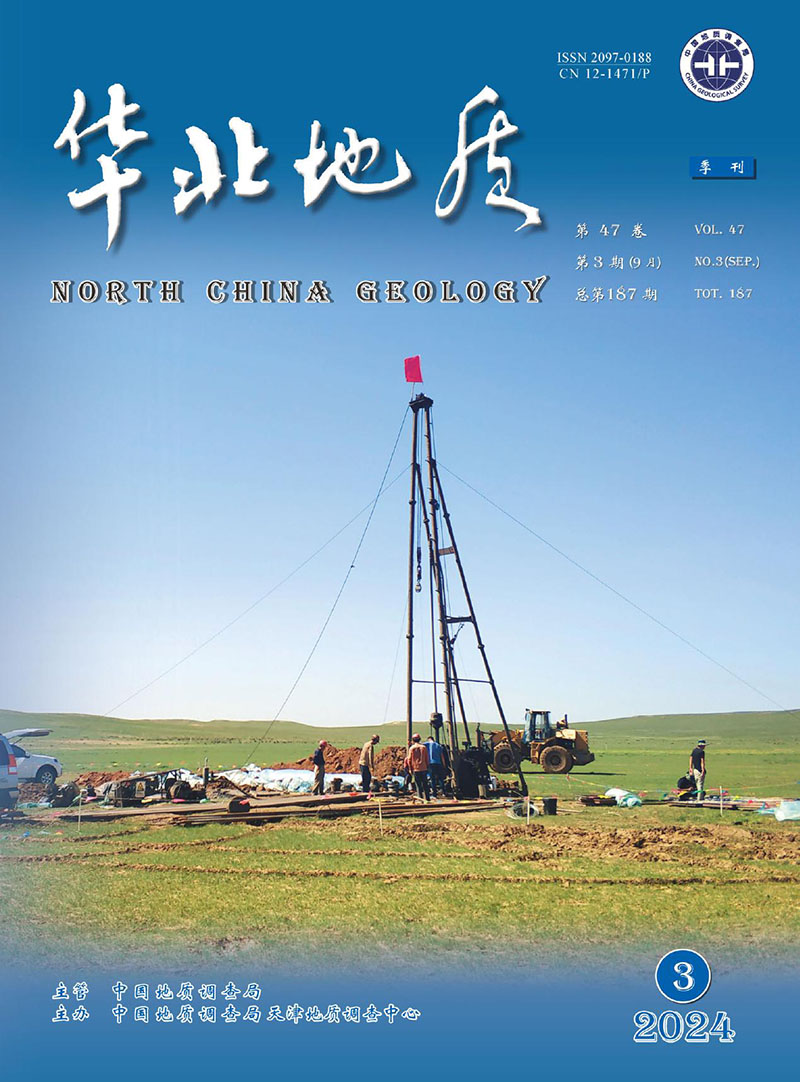| [1] |
蔡鹤生,周爱国,唐朝晖.1998.地质环境质量评价中的专家-层次分析定权法[J].地球科学,23(3):299-302.
Google Scholar
|
| [2] |
程光华,王睿,赵牧华,等.2019.国内城市地下空间开发利用现状与发展趋势[J].地学前缘,26(3):39-47.
Google Scholar
|
| [3] |
葛伟亚,王睿,张庆,等.2021.城市地下空间资源综合利用评价工作构想[J].地质通报,40(10):1601-1608.
Google Scholar
|
| [4] |
郭朝斌,王志辉,刘凯,等.2019.特殊地下空间应用与研究现状[J].中国地质,46(3):482-492.
Google Scholar
|
| [5] |
郭骏瀚,刘凯,邓岳飞,等.2023.基于熵权优化法的地下空间资源地质适宜性评价[J].地质通报,42(2/3):385-396.
Google Scholar
|
| [6] |
韩博,夏雨波,裴艳东,等.2020.雄安新区地下空间工程地质特征及环境地质效应[J].工程勘察,48(3):1-8.
Google Scholar
|
| [7] |
韩博,夏雨波,马震,等.2023b.雄安新区工程地质层组划分、三维地质结构构建及其在城市规划建设中的应用[J].中国地质,50(6):1903-1918.
Google Scholar
|
| [8] |
韩博,张曦,杜亚楠,等.2023a.基于粗糙集理论的雄安新区地下空间土体可利用属性重要性评价[J].华北地质,46(3):43-48.
Google Scholar
|
| [9] |
韩博,马震,夏雨波,等.2024.雄安新区地下空间资源开发利用地质适宜性评价[J].地质通报,43(4):594-610.
Google Scholar
|
| [10] |
黄宽,张万益,王丰翔,等.2024.地下空间储能国内外发展现状及调查建议[J].中国地质,51(1):105-117.
Google Scholar
|
| [11] |
蒋杰,葛伟亚,马青山,等.2021.南昌市中心城区地下空间开发地质适宜性评价[J].地质通报,40(5):734-744.
Google Scholar
|
| [12] |
马邦闯,谭飞,焦玉勇,等.2020.基于粗糙集与AHP的地下空间开发地质适宜性评价模型构建方法研究[J].安全与环境工程,27(6):153-159.
Google Scholar
|
| [13] |
马莎,刘聪聪,张润华,等.2021.基于熵权-层次分析法的地下空间适宜性评价[J].科学技术与工程,21(23):10013-10020.
Google Scholar
|
| [14] |
马震,夏雨波,李海涛,等.2021.雄安新区自然资源与环境-生态地质条件分析[J].中国地质,48(3):677-696.
Google Scholar
|
| [15] |
李林,王涛,董英,等.2023.地质结构约束下的城市多要素三维属性建模方法研究以西咸新区为例[J].西北地质,56(3):169-177.
Google Scholar
|
| [16] |
李鹏岳,王东辉,李胜伟,等.2021.山前冲积平原型城市地下空间开发利用地质适宜性评价-以成都市为例[J].地质通报,40(10):1644-1655.
Google Scholar
|
| [17] |
李鹏岳,韩浩东,王东辉,等.2021.城市地下空间资源开发利用适宜性评价现状及发展趋势[J].沉积与特提斯地质,41(1):121-128.
Google Scholar
|
| [18] |
李晓昭,王睿,顾倩,等.2019.城市地下空间开发的战略需求[J].地学前缘,26(3):32-38.
Google Scholar
|
| [19] |
刘宏伟,王国明,马传明,等.2022.沉积平原区地下空间开发利用适宜性评价指标体系研究-以北京通州区和河北廊坊北三县为例[J].华北地质,45(4):68-74.
Google Scholar
|
| [20] |
潘朝,吴立,左清军,等.2013.基于模糊数学的武汉市地下空间开发地质适宜性评价[J].安全与环境工程,20(2):19-23.
Google Scholar
|
| [21] |
彭建,柳昆,郑付涛,等.2010.基于AHP 的地下空间开发利用适宜性评价[J].地下空间与工程学报,6(4):688-694.
Google Scholar
|
| [22] |
谭飞,汪君,焦玉勇,等.2021.城市地下空间适宜性评价研究国内外现状及趋势[J].地球科学,46(5):1896-1908.
Google Scholar
|
| [23] |
王成善,周成虎,彭建兵,等.2019.论新时代我国城市地下空间高质量开发和可持续利用[J].地学前缘,26(3):1-8.
Google Scholar
|
| [24] |
王兰化,马武明,李明明,等.2015.天津滨海新区地下空间开发适宜性评价[J].地质调查与研究,38(4):299-304.
Google Scholar
|
| [25] |
夏友,马传明.2014.郑州市地下空间资源开发利用地质适宜性评价[J].地下空间与工程学报,10(3):493-497.
Google Scholar
|
| [26] |
夏雨波,郭旭,王冰,等.2022.雄安新区水土腐蚀性地质成因研究[J].华北地质,45(3):69-76.
Google Scholar
|
| [27] |
邢怀学,窦帆帆,葛伟亚,等.2022.城市地下空间开发利用地质适宜性三维评价指标体系研究-以杭州市为例[J].地质论评,68(2):607-614.
Google Scholar
|
| [28] |
杨木壮,张建峰,郑先昌.2009.城市地下空间开发利用的潜在不利影响及其对策[J].现代城市研究,24(8):24-28.
Google Scholar
|
| [29] |
杨文采,田钢,夏江海,等.2019.华南丘陵地区城市地下空间开发利用前景[J].中国地质,46(3):447-454.
Google Scholar
|
| [30] |
张茂省,董英,孙萍萍,等.2023.城乡融合与地上地下空间协同探测评价的理论与方法以关中平原城市地质调查评价为例[J].西北地质,56(3):153-168.
Google Scholar
|
| [31] |
张晓波,刘凯,蒋鹏,等.2023.基于约束条件的深圳市南山区地下空间开发地质适宜性评价[J].水文地质工程地质,50(4):213-224.
Google Scholar
|
| [32] |
张明阳,王一鸣,叶文荣,等.2020.温州市规划区地下空间开发地质环境适宜性评价[J].土木工程学报,53(S1):378-384.
Google Scholar
|
| [33] |
邹承杰.2018.河北省容城县中更新世以来的钻孔沉积物地球化学特征及古气候演化[D].河北地质大学硕士学位论文.
Google Scholar
|
| [34] |
Admiraal H, Cornaro A.2016.Why underground space should be in-cluded in urban planning policy and how this will enhance an ur-ban underground future[J].Tunnelling and Underground Space Technology, 55:214-220.
Google Scholar
|
| [35] |
Chen Z L, Chen J Y, Liu H, et al.2018.Present status and develop-ment trends of underground space in Chinese cities: evaluation and analysis[J].Tunnelling and Underground Space Technology, 71:253-270.
Google Scholar
|
| [36] |
Edelenbos J, Monnikhof R, Haasnoot J, van der Hoeven F, Horvat E, van der Krogt R.1998.Strategic study on the utilization of under-ground space in the Netherlands [J].Tunnelling and Underground Space Technology, 13(2):159-165.
Google Scholar
|
| [37] |
Li XZ, Li CC, Parriaux Aurèle, et al.2016.Multiple resources and their sustainable development in Urban Underground Space[J].Tunnelling and Underground Space Technology incorporating Trenchless Technology Research, 55:59-66.
Google Scholar
|
| [38] |
Ma S, Liu CC, Zhang RH, et al.2021.Evaluation for suitability of un-derground space using entropy weight-analytic hierarchy pro-cess [J].Science Technology and Engineering, 21(23): 10013-10020.
Google Scholar
|
| [39] |
Nathan D, Mark B, John D N.2018.Going underground:An explora-tion of the interfaces between underground urban transport infra-structure and its environment[J].Tunnelling and Underground Space Technology.81:450-462.
Google Scholar
|
| [40] |
Saaty T L.1997.A scaling method for priorities in hierarchical struc-tures[J].Journal of Mathematical Psychology, 15(3):234-281.
Google Scholar
|
| [41] |
Saaty T L.1990.How to make a decision: The analytic hierarchy pro-cess[J].European Journal of Operational Research, 48(1):9-26.
Google Scholar
|
| [42] |
Sterling R L, Nelson S.1982.Planning the development of under-ground space[J].Underground space, 7(2):86-103.
Google Scholar
|
| [43] |
Wout Broere.2016.Urban underground space: Solving the problems of today’s cities[J].Tunnelling and Underground Space Technolo-gy, 55:245-248.
Google Scholar
|
| [44] |
Zhou D K, Li X Z, Wang Q, et al.2019.GIS-based urban underground space resources evaluation toward three-dimensional land plan-ning: A case study in Nantong, China[J].Tunnelling and Under-ground Space Technology, 84(1):1-10.
Google Scholar
|






 DownLoad:
DownLoad: